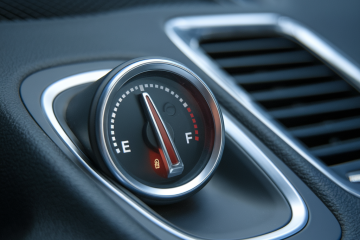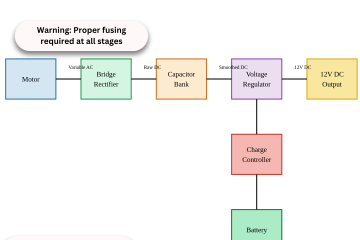
DIY Generator with a washing machine
The Ultimate Power Hack: How to Turn Your Old Washing Machine Into an Emergency Generator
Ever looked at your old washing machine and seen an emergency power source? No? Well, you’re about to join the ranks of resourceful preppers who know that inside every washing machine lies a potential generator just waiting to be unleashed. And no, this isn’t some crazy internet theory – it’s based on solid electrical engineering principles that your great-grandparents probably knew about.
First, let’s talk about what makes this possible. Most washing machines, particularly older models, use a permanent magnet motor. This type of motor can actually work in reverse – instead of using electricity to create motion (washing your clothes), it can use motion to create electricity. It’s like your washing machine has been moonlighting as a potential generator this whole time without telling you. Think of it as your appliance’s secret superhero identity.
Before you start ripping apart your family’s working washer, though, let’s be clear about what we’re looking for. You want an older model washing machine motor, preferably pre-2010. Direct drive motors work better than belt-driven ones, and you’re specifically looking for permanent magnet motors, not modern inverter types. The good news is, these older models are often free for the taking when someone upgrades to a newer model – one prepper’s trash is another prepper’s power source.
Now, let’s talk realistic expectations. With a properly set up washing machine motor generator, you can expect anywhere from 300-600 watts of power generation potential. That’s enough juice to charge devices, run LED lights, or power small appliances. While it won’t run your air conditioner (sorry, folks in Florida), it provides a sustainable way to generate power in grid-down situations. Think of it as having a mini power plant in your garage.
The basic process involves several steps, but don’t let that intimidate you. You’ll need to salvage the motor assembly from the washing machine, create or obtain a mounting frame, and rig up either a hand crank or bicycle-power method. Add to that a voltage regulator and proper wiring, include necessary fusing and circuit protection, and connect a deep cycle battery for power storage. It’s like building a LEGO set, except this one powers your emergency radio.
Here’s where we need to get serious for a moment. Working with electrical systems requires critical safety considerations – this isn’t the place to channel your inner “hold my beer and watch this” spirit. This is NOT a plug-and-play solution; you MUST understand basic electrical principles. Improper setup can damage devices or create fire hazards, which is why proper fusing and voltage regulation are non-negotiable components. Never connect directly to house wiring, and if you’re new to electrical projects, work with someone who knows their way around a voltmeter. Remember, the goal is to create emergency power, not an emergency. Here’s a video to help you: https://www.youtube.com/watch?v=0ieFZI4-6K8
The beauty of this system lies in its sustainability. Unlike gas generators that need fuel storage and maintenance, your washing machine generator can work indefinitely as long as you can provide mechanical input. Most successful builds use one of three power input methods: a hand crank for emergency charging, a bicycle setup for sustainable longer-term power, or wind/water power if your location permits. It’s like having a gym membership that powers your emergency lights.
Finding the right motor doesn’t have to be difficult. Appliance repair shops often have old machines they’re happy to get rid of. Scrap yards are another good source, and of course, there’s always your own dead washing machine. Online marketplaces can work too, but given how heavy these motors are, local is definitely better – your back will thank you.
What can you actually power with this setup? A properly configured washing machine generator can charge phones and tablets, run LED lighting for several hours, power small 12V appliances, maintain emergency communications, and keep small fans running. You can also use it to charge battery banks, creating a more flexible power solution. Just remember to store your generator setup in a dry place – rust is not your friend and a rusted generator is about as useful as a wet match.
The real value of this project goes beyond just creating a power source. It’s about understanding how to repurpose everyday items in an emergency. That washing machine that just died? It’s not trash – it’s an emergency power source waiting to happen. Plus, the skills you’ll learn while building this system will serve you well in any grid-down situation.
Is it legal? Yes, generating your own power is perfectly legal, though you’ll want to check local codes for specific restrictions. Don’t even think about connecting to the grid without proper permits – that’s a whole different ballgame. Is it worth the effort? For emergency prep, absolutely. For daily use, probably not. But for learning valuable skills and having a reliable backup power source? Definitely.
Next time, I’ll walk through the specific wiring diagram and voltage regulation setup that makes this system safe and effective. For now, start sourcing those old washing machine motors – just don’t tell your spouse I’m the reason you’re hanging around appliance repair shops!
Remember: This is a project that requires proper electrical knowledge and safety measures. Always work with someone experienced when dealing with electrical systems, and never skip proper safety components and testing. Your family’s safety is worth more than any shortcuts you might be tempted to take.


